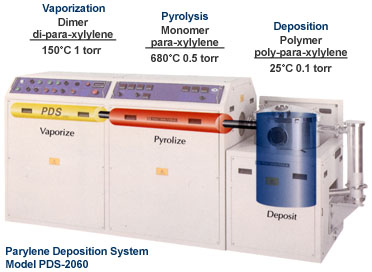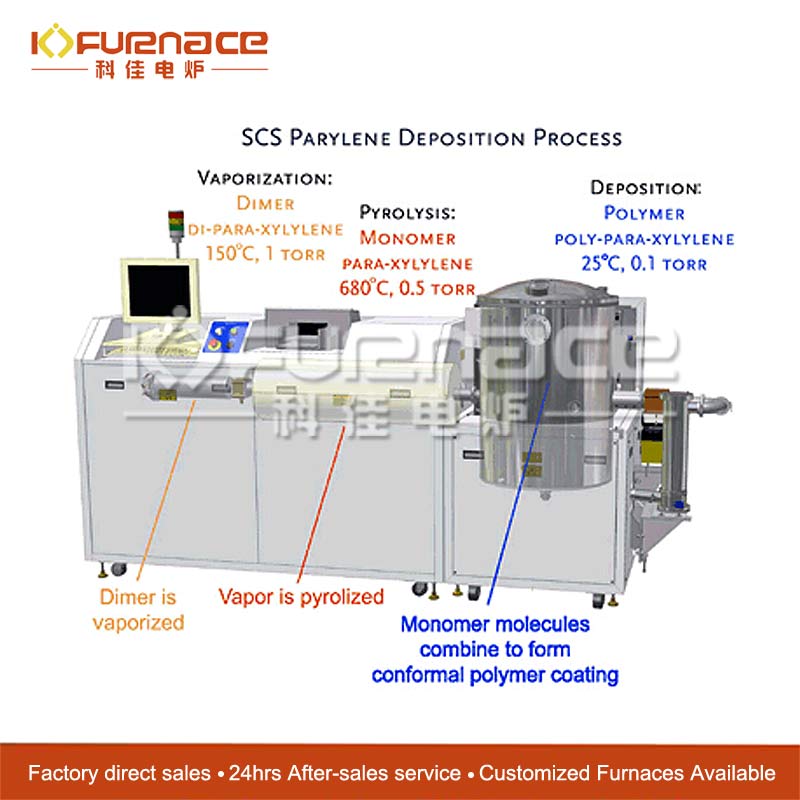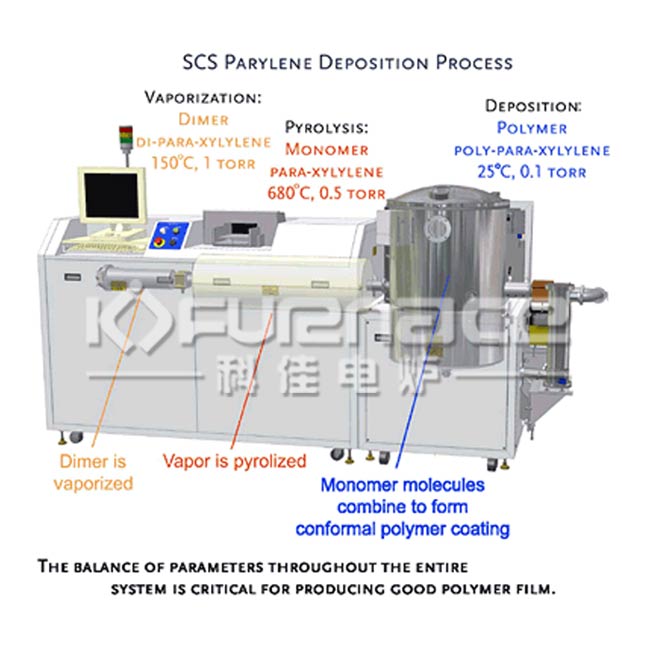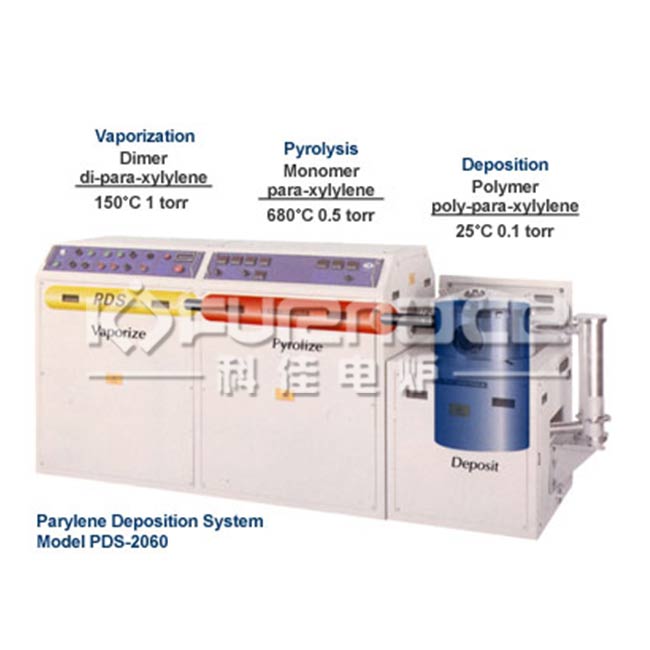(Static Coater)Parylene Deposition System---Model :KJ-2060VJ
Parylene Deposition System Features :
Automatic Operation/PLC Control
Automated Vaporizor and Pump Valves
Programmable Digital Discrete Temperature Controller For All Heated Zones
24” Dia. X 32” High Jumbo Vertical Chamber (~230 liter Capacity) With Hinge Lift, Fixtures And Baffles.
Cold Trap Base.
Message Display – Function/Error
Rotation Sensing.
Heated Load Door.
Heated Vaporizor Valve.
PDS 2060 Mechanical Chiller (208-240V, 50/60 Hz)
20042 Cascade Refrigeration System, Includes Cold Probe Temperature Display
E2M40 Vacuum Pump in lieu of Standard E2M30 (PP-574-1001) Vacuum
Pump (25 CFM@50Hz, 30 CFM@60Hz) CustomizableParylene Deposition Process:Parylene is applied at room temperature with deposition equipment that controls the coating rate and ultimate thickness. Polymer deposition takes place at the molecular level: Beginning with the granular form of Parylene, raw material Dimer, the material is vaporized under vacuum and heated to a dimeric gas. The gas is then pyrolized to cleave the dimer to its monomeric form. In the room temperature deposition chamber, the monomer gas deposits as a transparent polymer film. The required thickness of a coating can vary based on the application, but thickness can range from the hundreds of angstroms to several mils, with the typical coating being in the microns range.

Microelectronic semiconductors: high-purity passivation layer and dielectric layer.
Hybrid circuit: Improve the bonding strength of leads and solder joints, eliminate surface moisture; metal ions and other particulate pollution.
Printed circuit boards: They can maintain high reliability in salt spray tests and other harsh environments.
Polymer materials: Their unique physical and chemical properties can be effectively used in the isolation and protection of polymer materials.
Magnetic materials: Their outstanding insulation properties and unparalleled ultra-thin coatings are widely used in the protection of magnetic materials.
Sensors: They are resistant to high temperatures, chemicals, voltages, oil pollution, radiation and other environments.
Medical instruments: They are approved by the US FDA and can be used for various types of in vivo implants to improve the surface lubrication, biocompatibility and reliability of devices.
Cultural relics protection: Parylene can be used to reinforce and protect fragile cultural relics and specimens, extending their lifespan by thousands or even tens of thousands of years.









 E-mail:web@kejiafurnace.com
E-mail:web@kejiafurnace.com
 Tell:+(86) 18037178440
Tell:+(86) 18037178440
 Whatapp:+(86) 180-3717-8440
Whatapp:+(86) 180-3717-8440
 Address:Room 1505, Building 9, No. 26 Dongqing Street, Zhengzhou High-tech Industrial Development Zone
Address:Room 1505, Building 9, No. 26 Dongqing Street, Zhengzhou High-tech Industrial Development Zone
